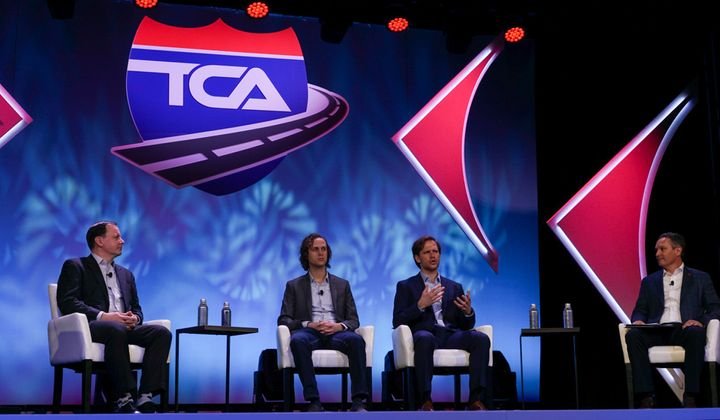
Autonomous trucking has long been the stuff of science fiction, but in recent years, companies like Waymo and Plus have made a large push to get autonomous trucks into the mainstream. In fact, these two companies joined Aurora recently at the Truckload Carriers Association in Las Vegas to discuss the current state of autonomous trucking and its future.
Essentially, the issue with autonomous technology and removing drivers from the cab entirely is that, while this technology works well in controlled testing environments, putting these trucks into practical service is more challenging. One of the biggest barriers currently is the issue of weather and climate.
How’s the Weather Today?
Autonomous technology relies on sensors to guide vehicles and warn systems about hazards. In sunny conditions where most of the testing has been taking place, this isn’t a big issue. In inclement conditions, however, these sensors tend to function less efficiently, and this is a challenge that the autonomous trucking industry has yet to fully overcome.
Different Needs, Different Solutions
Something else that was noted that the Truckload Carriers Conference was that making the jump to autonomous isn’t a simple flip of the switch. The trucking industry is diverse, and within each sector, there is microdiversity going on.
What this means is that introducing large-scale autonomous technology isn’t something that can be done overnight, nor is it something that can be easily applied to every corner of the trucking industry. Different types of trucks, industries, cargo and more will all need their own autonomous systems that have been customized to handle the challenges inherent to the specifics of different needs.
Rules, Rules and More Rules
Rules from the Federal Motor Carrier Safety Administration (FMCSA) regarding autonomous trucking have also been the subject of concern. The agency has pushed back the issuance of specific rules for autonomous technology a number of times, meaning no one is totally sure where things will end up. This places software and hardware developers in a state of limbo where they are unsure of what will be required once autonomous technology is ready for mainstream deployment.
In the end, there’s no question that autonomous trucks will hit the road eventually, so fleet managers would be wise to pay attention. Even as this is the case, it doesn’t appear that Robbie the Robot will be driving your trucks anytime in the immediate future, so continue to follow best practices and be ready to act accordingly as changes take place.
Additional credit:
https://www.truckinginfo.com/10164743/are-you-up-to-speed-on-autonomous-trucking







